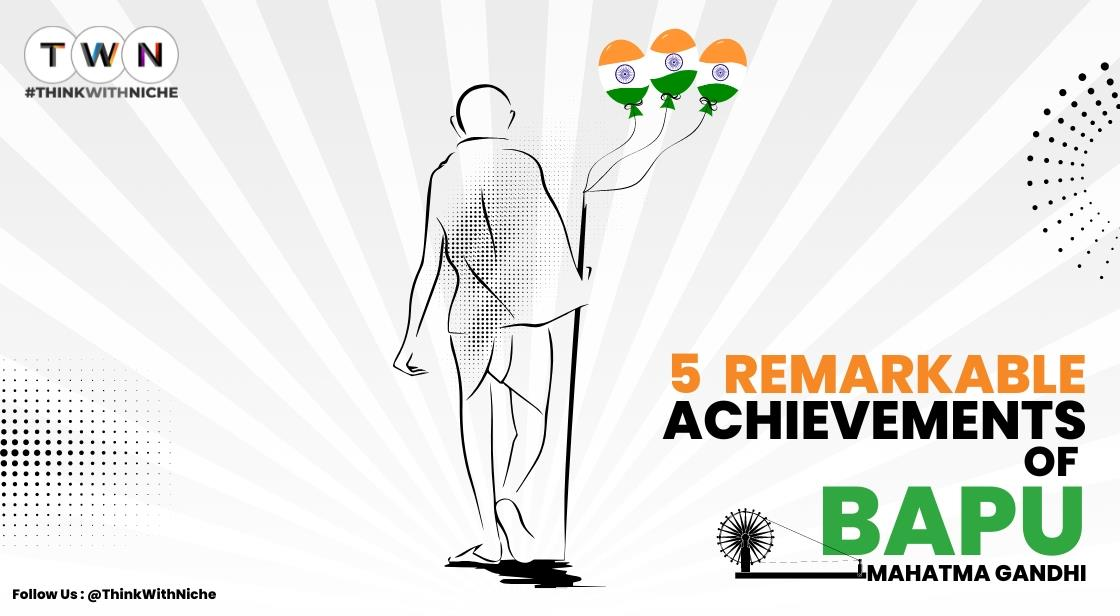Five Remarkable Achievements of Gandhi
Mohandas Karamchand Gandhi, popularly known as Gandhi, is a tall figure and still remains in the consciousness of India. Stating the reason would be the same as saying the sky is blue. Gandhi's contribution to the Indian Independence movement is huge. He mobilized the whole nation and would go on to lead perhaps the most epic independent struggle in the whole world. India's independence from the British Raj is heroic and has almost become a symbol of resistance across the world. This is why Gandhi's name is etched into the consciousness of India and its citizens. Even though the credit for India's independence goes to many other brave freedom fighters such as B.R. Ambedkar, Bhagat Singh, Subhash Chandra Bose, etc, it was Gandhi who ignited this fire.
Gandhi, who had gone to South Africa to practice as a barrister, came back to India with a changed perspective. He had faced a lot of racism there and thus led a small movement against racism in that country. After this, a realization hit him like thunder. If he could do this in a foreign country, why not go back to his own country and try to break it free from the shackles of the British. After that, there was no looking back for him. Gandhi soon became a national phenomenon and mobilized Indians to fight against the British through non-violent measures. He did this through many marches, hunger strikes, public protests, etc. Today Gandhi is celebrated as a symbol of non-violence in the world and has inspired countless great politicians and activists such as Martin Luther King Jr.
Let's take a look at some of his biggest achievements-
Five Remarkable Achievements of Gandhi
1. Civil Disobedience Movement at Champaran
In Champaran, Gandhi led a non-violent civil disobedience movement against the landlords to provide some relief to the farmers. His obstinate nature forced the British to sign an agreement that gave some freedom to the farmers. This was his first victory in India.
In fact, the opposition to the British government was at its peak in the country, yet due to the right direction, right effort, and disorganized leadership, no revolutionary was able to achieve success in his objectives. After the very first revolution of 1857, the British government felt that it was necessary to create a distance between Hindus and Muslims to rule India.
The atrocities of the British were increasing and it was very difficult to challenge British rule. The one who rebelled was not spared. Indian people were getting poorer and poorer and the condition of farmers was very bad. They had neither food to eat nor clothes to wear. Despite this, they were forced to cultivate indigo, and on that too, the interest of three kathia had made the condition of the farmers very bad.
After this Gandhiji finally arrived in Champaran. It so happened that when he came to India after a successful satyagraha for Indians in Africa against the British, a smile appeared on the faces of Indians.
He realized the sufferings of the people and the excesses of British rule for the first time only after coming to Champaran. In fact, when Gandhiji returned to India after successful Satyagraha in Africa in 1894 and reached Lucknow in 1916 to attend the annual session of the Congress, he met Rajkumar Shukla, an indigo farmer from Champaran. It was he who invited Gandhiji to come to Champaran.
To Read This Full ARTICLE, Click Here



